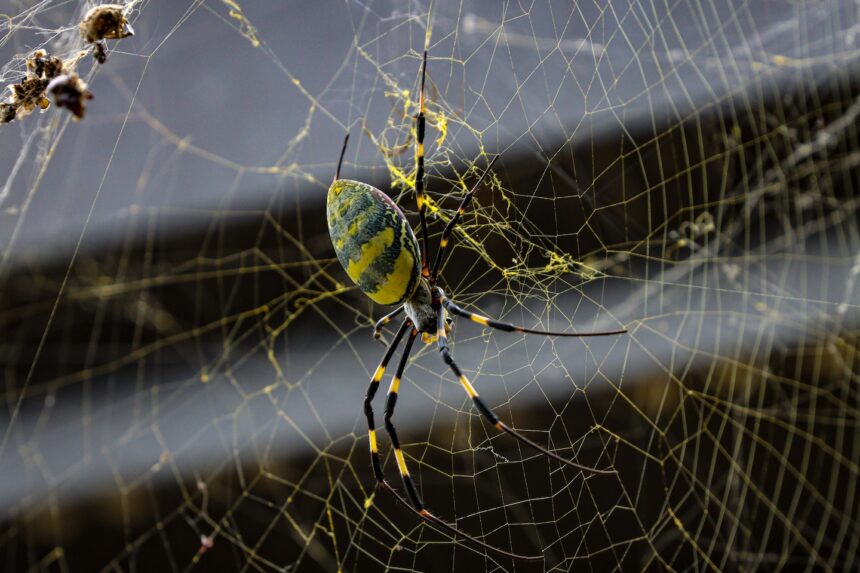The invasive species has spread since it first appeared in the United States about a decade ago in Georgia, and is expected to be sighted farther along the East Coast in coming years.
But experts say residents of New York and Delaware should remain calm if they come across the unexpected sight: These arachnids are timid and look scarier than they are.
Where do Joro spiders come from, and why are they spreading?
Joro spiders are native to Japan, China, Korea and Taiwan. The common theory is that they were transported to the United States on a shipping container.
About 60 nonnative species of spider have been detected in North America, a 2015 paper in the journal PeerJ noted. They often are able to hitch a ride on commodities unnoticed because of their “secretive habits,” the authors wrote.
Since first appearing in about 2014, the Joro spider appears to have become established in north-central and northeast Georgia, with a presence in neighboring areas of Tennessee and South Carolina. They have been spotted between Forsyth, Ga., and Baltimore, with an anomalous sighting in Oklahoma in 2021.
East Tennessee State University researchers wrote last year that the Joro was likely to spread north given its cold tolerance, noting that “plentiful suitable habitat favors successful North American invasion.”
The species appears able to thrive in busy urban ecosystems and is unbothered by busy roads, unlike many of its American cousins, a University of Georgia study published in February found.
“They build their golden webs between power lines, on top of stoplights and even above the pumps at local gas stations — none of which are particularly peaceful spots,” the university said in a news release about the research, adding that the species’ hardiness had helped it multiply into millions in the state.
Are Joro spiders venomous?
Technically, yes, like almost all spiders, but their fangs are not designed to pierce human skin. They are also among the “shyest” of spider species, another University of Georgia study found last year. They seem to freeze and remain completely immobile for about an hour when threatened with a mild disturbance.
Richard Hoebeke, associate curator at the University of Georgia Collection of Arthropods, told The Post in 2022 that he was aware of few instances of Joro spiders biting humans. In one case, the bite caused redness, swelling and mild fever, which could have been from an allergic reaction. He recommended that the spider “not be picked up with your fingers.”
No, but its genus appears to be particularly good at “ballooning,” two studies found in 2011. Ballooning is a behavior exhibited by many spider species, particularly when they are young and especially light, and involves the arachnid shooting threads into the air still attached to their bodies that can be picked up by the wind, which then carry them to a new location.
Joro spiders do not appear to represent a risk to humans, beyond constructing their webs in places where pedestrians and cyclists could accidentally plow into them.
Research is mixed on whether their success could push out native species. David Coyle, assistant professor of forestry and environmental conservation at Clemson University, said in October after publishing a study on the topic that native spiders did not appear to be found in areas where there was a high prevalence of Joro spiders.
“These are pushing out native species and catching and killing whatever happens to get in their webs,” he said in a news release.
But Andy Davis, who co-authored the University of Georgia studies, said in a news release then that they appear to have little impact on local food webs or ecosystems. Others have called for more research.
Some Georgians have come to love their new neighbors, even creating a fan page for the “captivating” species.

